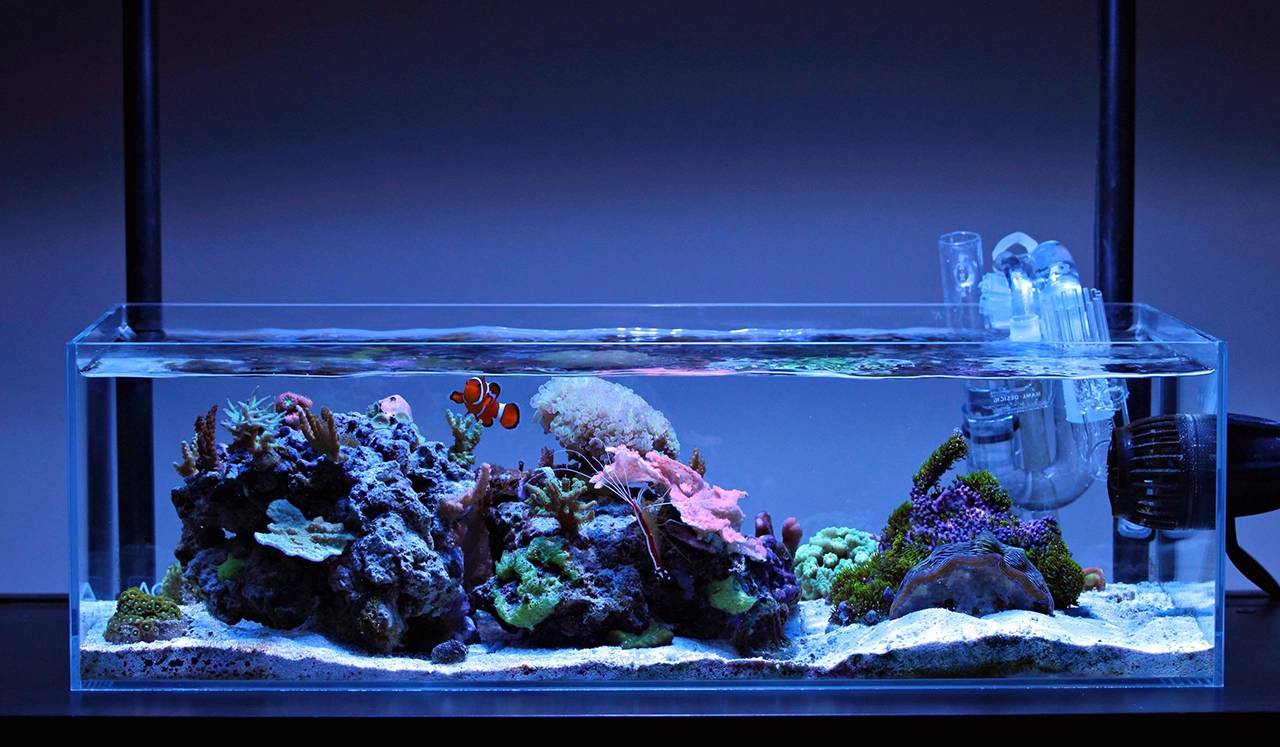Stunning 9-Gallon Reef Tank – teamschreiba's TOTM | NanoReef

Tank Specifications
Volume: 9 Gallons / 34 Liters
Dimensions (L × W × H):
24.0" ×
12.0" ×
7.0"
61.0cm ×
30.5cm ×
17.8cm
Equipment List
- Salt: Tropic Marin
Frequently Asked Questions
How often should I perform water changes on my reef tank?
It's recommended to do water changes at least once a week. In my routine, I change about 2 gallons per week which has been sufficient to maintain good water parameters.
What is the best way to maintain proper nutrient levels in my reef tank?
Regular water changes, along with using a combination of floss, carbon, and Purigen, help maintain nutrient levels by removing organic waste. Testing water parameters regularly is also key.
How can I tackle algae problems in my reef tank?
To manage algae, keep up with weekly water changes, control feeding amounts, and ensure your tank isn’t overstocked. I found that using floss and running carbon can help, along with a protein skimmer to remove nutrients.
What should I do to maintain the cleanliness of the tank's equipment?
You should clean the skimmer cup during water changes, and I also recommend cleaning the MAME overflow every 3-5 weeks using a vinegar bath.
How do I test my water parameters, and how often should I do it?
I typically test my water parameters every 1-2 months using the API reef test kit and a Hanna phosphate checker. Regular testing will help you catch any issues early.
What are the key factors to consider when aquascaping my reef tank?
Aim for a layout that promotes open swimming space for fish, proper light penetration for corals, and allows for good water flow. It's essential to not overcrowd the tank.
How do I care for my SPS corals?
SPS corals typically require strong water flow and stable water parameters. Ensure adequate light, monitor calcium and alkalinity levels regularly, and consider dosing if levels drop.
What lighting setup is best for reef tanks?
My setup consists of a 150W metal halide (MH) combined with four T5 bulbs. This combination provides strong lighting suitable for various coral types including SPS, LPS, and soft corals.
How can I fix cyano outbreaks in my tank?
I experienced a cyano outbreak and eliminated it by removing dead mangrove plants that were contributing to the problem and placing fresh ROX carbon in the filter sock. Immediate removal of the source is key.
What should I do if my coral colors start to fade?
If coral colors fade, it may indicate poor water quality or insufficient lighting. Check water parameters regularly and consider adjusting your lighting or supplementation if necessary.